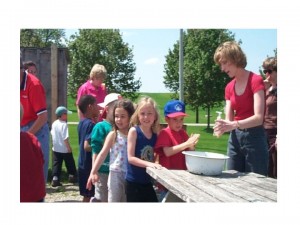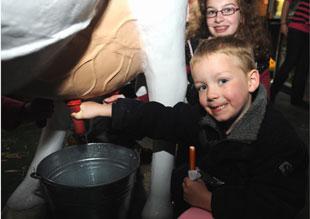My grandfather, the one who ran the Massey-Ferguson dealership in Cookstown, Ontario, Canada, lost two-or-three of his fingers from the knuckle up due to farm machinery (that’s me and sis).
 But when I was about 10, he would send me inside a combine to put pliers on a nut while the others loosened a bolt – from the outside.
But when I was about 10, he would send me inside a combine to put pliers on a nut while the others loosened a bolt – from the outside.
I only remember how damn hot it was.
In the UK – gramps was from Newport, Wales — machinery and transport continue to be the main causes of life-changing and life-ending injuries on farm.
Four in 10 of all farmworkers who have lost their lives over the past decade were related to workplace machinery or transport, said NFU vice-president Guy Smith.
Mr Smith, who is also chair of England’s Farm Safety Partnership, said that while the most recent figures from the Health and Safety Executive showed a reduction in the number of deaths through machinery and transport, one death was one too many.
Helen Banham, a dairy farmer from Skegness, Lincolnshire, lost two fingers on her right hand in a life-changing accident with a bottling machine four years ago.
She was going about her daily routine when a bottle dropped through the machine. Instinctively, and without thinking of turning off the bottling line, she reached into the machine to grab it.
Her hand became trapped in the machine and her thumb was severed, while a spike penetrated the palm of her hand.
While pulling her hand free she ripped it open, severely and irrevocably damaging the tendons in her third finger.
Mrs Banham said: “It was our wake-up call. The milk business was taking so much of our time and we were really up against it. We couldn’t afford to take on any more staff, costs were rising and the prices we could charge just weren’t covering our costs.”








 goats at Greenmeadow community farm, Cwmbran.
goats at Greenmeadow community farm, Cwmbran..jpeg) failed to follow steps to reduce the risk to visitors from E.coli O157 in animal dung.
failed to follow steps to reduce the risk to visitors from E.coli O157 in animal dung..jpg) although outbreaks can occur at other times.
although outbreaks can occur at other times.